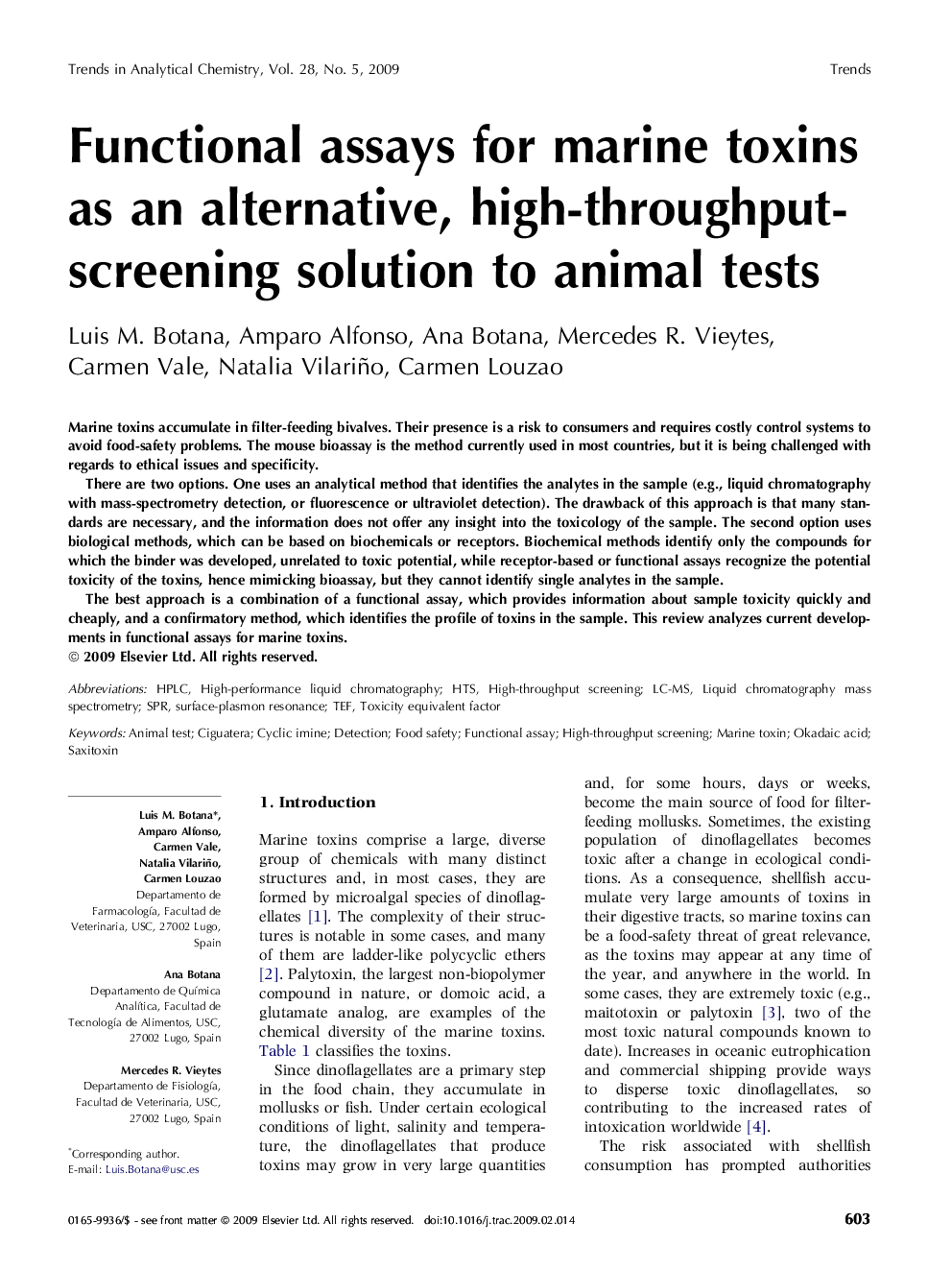| Article ID | Journal | Published Year | Pages | File Type |
|---|---|---|---|---|
| 1248609 | TrAC Trends in Analytical Chemistry | 2009 | 9 Pages |
Marine toxins accumulate in filter-feeding bivalves. Their presence is a risk to consumers and requires costly control systems to avoid food-safety problems. The mouse bioassay is the method currently used in most countries, but it is being challenged with regards to ethical issues and specificity.There are two options. One uses an analytical method that identifies the analytes in the sample (e.g., liquid chromatography with mass-spectrometry detection, or fluorescence or ultraviolet detection). The drawback of this approach is that many standards are necessary, and the information does not offer any insight into the toxicology of the sample. The second option uses biological methods, which can be based on biochemicals or receptors. Biochemical methods identify only the compounds for which the binder was developed, unrelated to toxic potential, while receptor-based or functional assays recognize the potential toxicity of the toxins, hence mimicking bioassay, but they cannot identify single analytes in the sample.The best approach is a combination of a functional assay, which provides information about sample toxicity quickly and cheaply, and a confirmatory method, which identifies the profile of toxins in the sample. This review analyzes current developments in functional assays for marine toxins.
